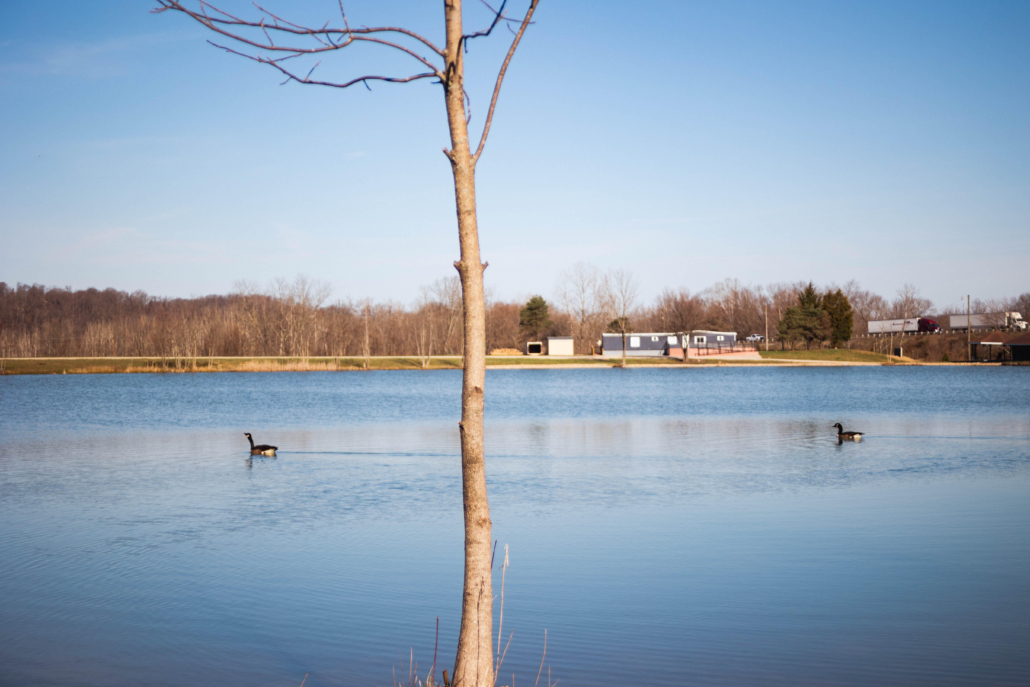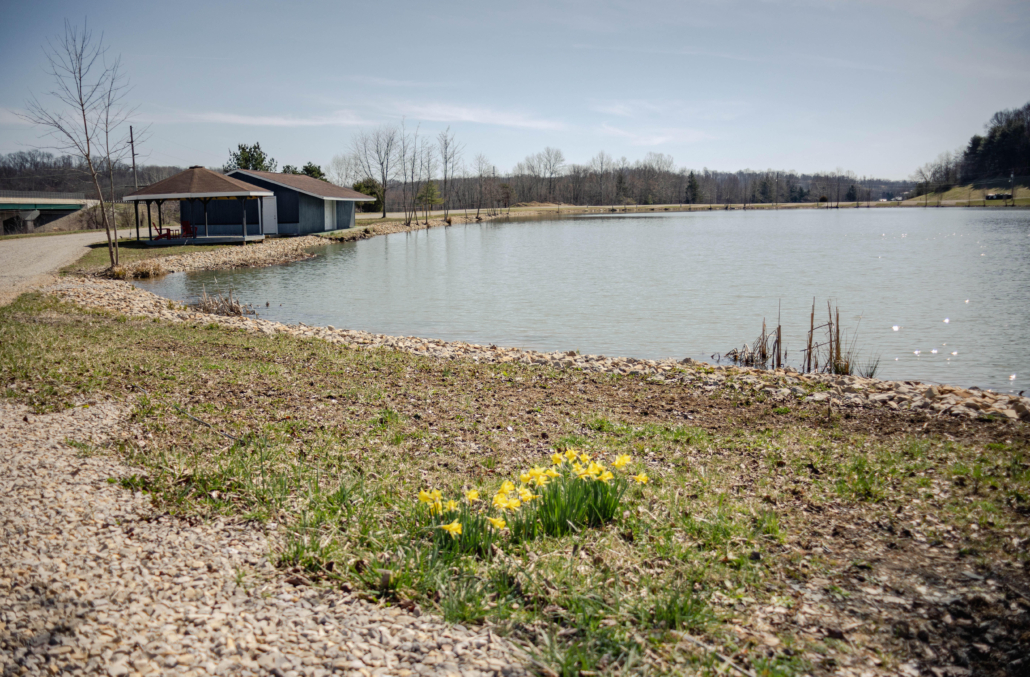Spring Flora and Fauna at Happydale
Glamplyfe Happydale April Flora and Fauna
As Spring flowers are starting to bloom at GlampLyfe, our guests have been asking about which fish they can catch and what animals they’ll see on the campsite. The roster is stacked. Whether you’re coming for a nature walk, birdwatching, fishing, or just glamping, you’re bound to see some of April’s finest and furriest. We decided to round up some fun facts and general family friendly information. Here’s what to look out for in Cambridge, Ohio this month!
Flora
Daffodils are in bloom on the lawns of GlampLyfe. These easy-to-grow flowers are a Spring staple. You may not know but there’s a lot to love about these yellow beauties. “Daffodil” is the common name for plants in the genus Narcissus, named after a mythological figure. Gifting a bouquet of daffodils symbolizes happiness while only gifting a single bloom may symbolize bad luck to come. Daffodils are the national flower of Wales. They believe whoever spots the first bloom of the season will have monetary luck that year.
Fish
Catfish can be found in our pond. Catfish are everywhere, they live on every continent except Antarctica. This is partly because they can lay up to 4,000 eggs per pound of body weight. They can have up to four pairs of whiskers which are full of sensory organs. Their feline-looking whiskers are what gives them the name “cat” fish.
Blue Gill can be found in our pond. These tasty fish go by many names including “bream”, “perch”, and “copper nose”. They’re in the Sunfish family. Their cheeks and gill cover are blue but they’re mostly yellow.
Crappie can be found in our pond. Like Blue Gill, they’re also in the Sunfish family. They normally travel in schools. The world record for largest black crappie caught was 5.46 lbs in Tennessee. Their eyes look forward above their nose so they mostly hunt for prey in front of and above their body.
Smallmouth Bass can be found in our pond. Like Blue Gill and Crappie, they’re in the Sunfish family. They’re a white meat fish which is rich in protein and low in fat, but gamier than their Largemouth counterparts.. In certain regions, they’re considered exotic species.
Largemouth Bass can be found in our pond. They’re carnivorous freshwater gamefish. They can be very heavy, up to 22 pounds. They’re known to inhabit lakes and large rivers with submerged aquatic vegetation.

Sky
Hawks can be found anywhere above the campsite. If you take the path up past the hillside cabins to the large grassy clearing, you’ll find a great birdwatching and hawk-sighting spot. Anywhere you see them, they can see you. Hawks can see medium-sized prey from around a mile away
Storks may bring babies but they can be very old. Storks can live up to 22 years. There are around 20 species of these long-necked birds. They’re carnivorous and eat insects, fish, amphibians, reptiles, small animals, and even small birds.
Ring-necked Ducks hang out around our ponds. They migrate from central Canada to the southeastern USA so you’ll only be able to find them during certain times of year. The males are usually black, gray, and white while the females are usually brown.
Canadian Geese have an important role in the campsite. They’re always in the pond, walking in the fields, and flying overhead. They help us by dispensing seeds and adding nutrients to the soil. They even recognize humans. Often, Canada geese mate for life.
Turkey exists in the sky category but they can also run and swim quickly. Wild turkeys have two stomachs, no teeth and sleep in trees. In some circumstances, they can fly up to 60 miles per hour. Absolutely terrifying.
Land
Otters can be found scurrying around the ponds. They’re carnivorous and very hungry — they can eat up to a fourth of their weight each day. Sea otters have the thickest fur of any animal. Since the 1970’s some otter species fall under the Marine Mammal Protection Act and Endangered Species Act.
Beaver can be found near the edge of ponds. Beavers are interesting because they can live up to 30 years old, their teeth can grow up to 4 feet per year, and they’re the largest rodents in North America (R.O.U.S).
Muskrat may be found near the edge of ponds since they are considered a semiaquatic rodent. They have an important ecological role as they influence the ecology of the wetlands (and because some humans eat them). If you need help telling a beaver and muskrat apart, ask one of our on-site employees.
Squirrel can be found all over the world and do not need an explanation…
Deer are very popular at our campsite. White-tailed deer and their cousins can be spotted hanging out in our woods almost every weekend. Fun fact: Since 1988, these have been Ohio’s official state mammal
Bobcat are not typical guests at our campsite, however they could hypothetically be found at night. They mostly hunt during dawn and dusk. They loudly scream or yelp when they feel that they are in danger. If you see one, back away slowly and deliberately.
Black Bear are not typically guests at our campsite. They’re an honorable mention since they’re found in this part of Ohio and the Appalachian mountains. If you come across a black bear, keep your eye on it while changing routes or backing away in the direction you came from. Stay calm and don’t run unless it comes at you.
Humans can be found all over the campsite, especially in the front trailer. If you see one, don’t be afraid to say hi. We’re always happy to meet new people.





